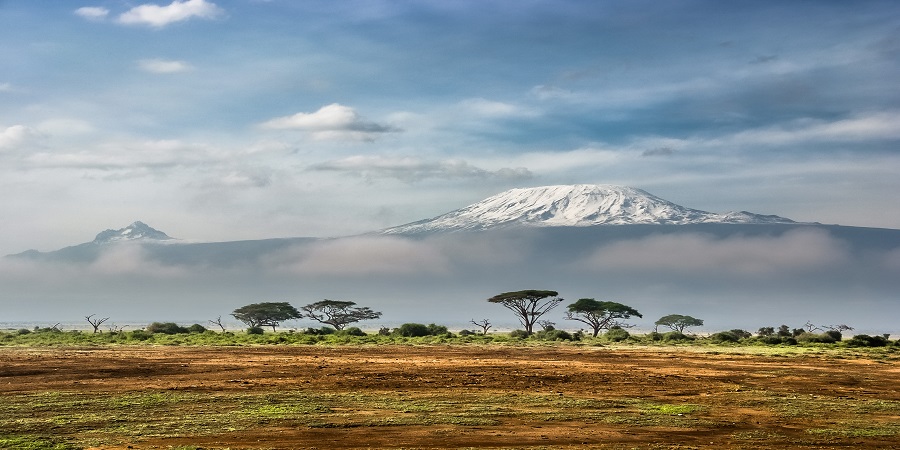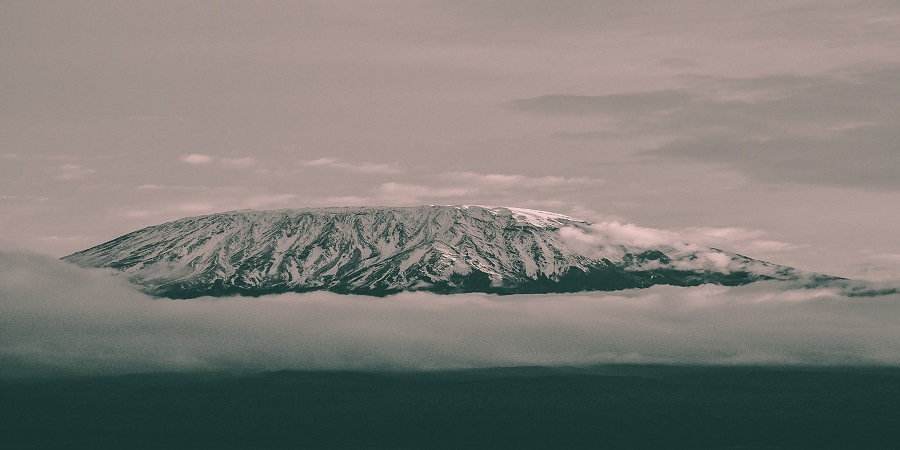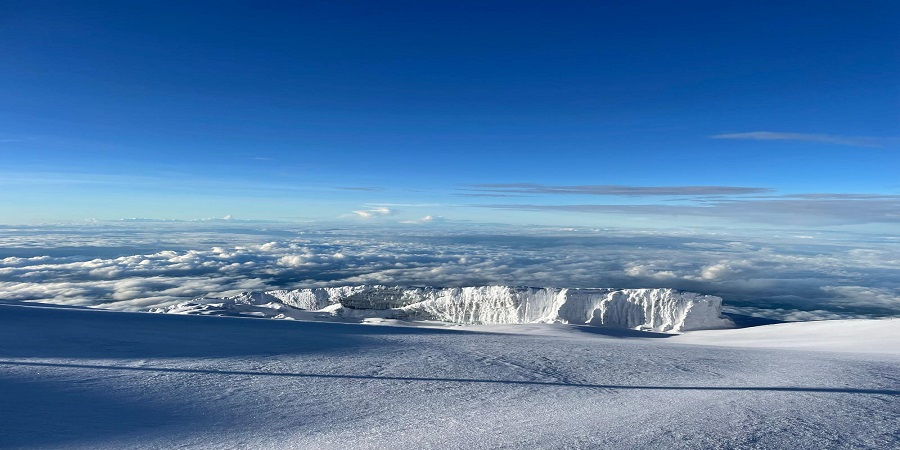Kilimanjaro Temperature by Altitude
Mount Kilimanjaro’s temperature varies greatly depending on the altitude. At the base, the climate is warm and tropical, with average daytime temperatures between 20°C and 27°C (68°F to 81°F). As climbers ascend through the rainforest and moorland zones, the temperature drops gradually, becoming cooler and less humid. Higher up in the alpine desert, days can still be sunny but nights fall below freezing. At the summit, Uhuru Peak, temperatures can drop as low as -20°C (-4°F), especially during night climbs. This drastic range highlights why layering clothing is critical for a successful trek.
Kilimanjaro Weather by Season
Kilimanjaro has two main climbing seasons that align with Tanzania’s dry periods: January to early March and June to October. The first season, from January to March, offers clear skies, crisp air, and fewer crowds on the trails. The second season, June to October, is the most popular, with stable weather and excellent summit conditions. Rainy seasons, from April to May and November, bring heavier clouds, muddy trails, and reduced visibility, though they attract climbers who prefer solitude. Each season presents unique challenges, so understanding weather patterns is key to choosing the right time for your trek.
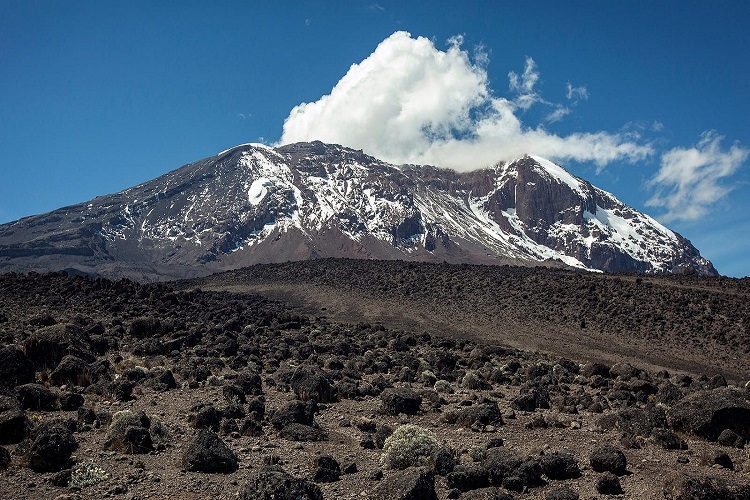
Best Time to Climb Kilimanjaro 2026–2027
The best time to climb Kilimanjaro in 2026–2027 will depend on your priorities: comfort, photography, or fewer crowds. For clear skies and great views, consider climbing between June and October, when weather is most stable. If you prefer quieter trails, January to early March may be ideal, offering a more personal connection with nature. Avoid heavy rains in April, May, and November, unless you are an experienced trekker seeking a less crowded experience. Planning your trek around these seasons ensures better safety, visibility, and overall enjoyment of your climb.
How Temperature Affects Your Climb
Temperature changes on Kilimanjaro directly affect a climber’s health, energy, and gear requirements. Warm, humid conditions in the rainforest zone can cause excessive sweating, making hydration crucial. As you ascend, cold nights in higher camps increase the risk of altitude sickness and hypothermia if you are not properly equipped. Proper layering, sleeping bags rated for extreme cold, and thermal clothing are essential for summit attempts. Understanding these variations helps you stay prepared for both the heat of the day and the freezing summit nights, ensuring a safer and more comfortable climb.
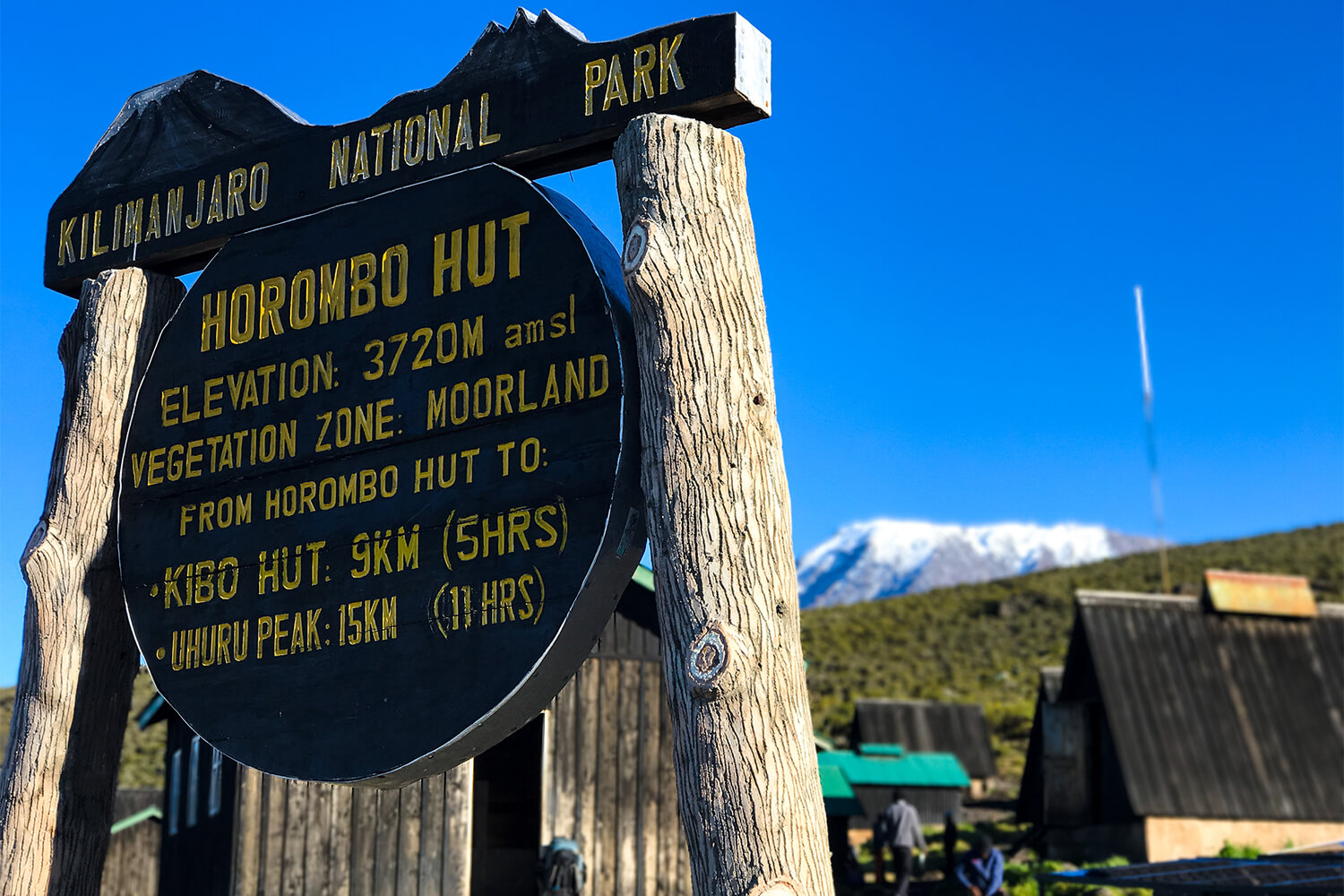
Essential Packing Tips for Kilimanjaro Weather
Packing for Kilimanjaro requires careful planning to handle diverse weather conditions. A good layering system with moisture-wicking base layers, insulating mid-layers, and waterproof outerwear is essential. Don’t forget gloves, thermal socks, and a warm hat for summit nights. Sunglasses and sunscreen are also important to protect against intense sun exposure in the alpine desert. For comfort, carry lightweight trekking clothes for lower altitudes and cold-weather gear for higher zones. A smart packing strategy ensures you remain adaptable to Kilimanjaro’s unpredictable temperature shifts. Book Now with Prehemy Tours to days to make your experience adventures come true.
The Extreme Temperatures of Mount Kilimanjaro
Mount Kilimanjaro’s temperatures vary dramatically depending on elevation. At the base of the mountain, climbers experience tropical warmth with daytime temperatures ranging from 21°C to 27°C (70°F to 80°F). However, as you trek higher, the climate changes rapidly, and by the time you reach Uhuru Peak, nighttime temperatures can drop as low as -29°C (-20°F). This makes Kilimanjaro unlike any other mountain on Earth in a single climb, you pass through rainforest, moorland, alpine desert, and icy summit zones. The mountain essentially creates its own weather, so climbers must be prepared for anything: sunshine, rain, snow, or strong winds.
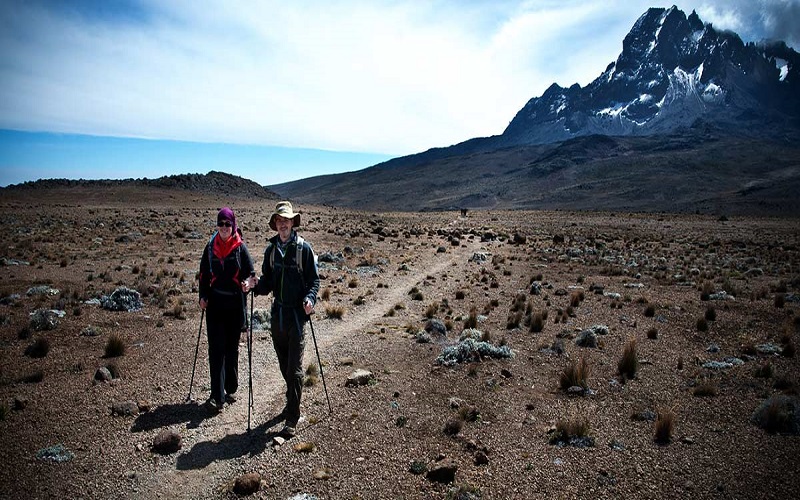
Kilimanjaro Weather by Month
January 2026-2027: Warm Base, Freezing Summit
January is one of the most popular months to climb Kilimanjaro thanks to its relatively dry conditions and clear skies. At the base, temperatures are 15°C to 25°C (59°F to 77°F), making it comfortable for trekking through the rainforest zone. However, once climbers approach the summit, the temperatures quickly shift to a freezing range of -10°C to -20°C (14°F to -4°F). This dramatic change means climbers must dress in layers to adapt to the rising altitude. Clear skies often provide incredible views of glaciers at the top, making January a favorite choice for photographers and adventurers seeking spectacular summit sunrises.
February 2026-2027 : Stable and Dry Weather
February is another excellent climbing month, often considered the best overall time to climb Kilimanjaro. Similar to January, the base enjoys mild temperatures of 15°C to 25°C (59°F to 77°F), but the summit can still feel brutally cold with icy winds. February offers one of the most stable weather windows, with fewer rain showers and excellent visibility. This is the reason many climbers choose February for summit attempts. While the conditions are still harsh at higher altitudes, the reduced risk of rain makes trekking more comfortable and enjoyable compared to wetter months.
March 2026–2027: Beginning of the Rainy Season
March marks the start of the long rainy season, and conditions begin to change significantly on Kilimanjaro. At the base, the climate remains pleasant, averaging 15°C to 25°C (59°F to 77°F), but heavy clouds and rains often roll in. At higher elevations, conditions are harsher, with summit temperatures falling between -10°C and -20°C (14°F to -4°F). This makes climbing more challenging, as wet trails and muddy conditions can slow progress. While visibility is often reduced, March still attracts climbers who prefer fewer crowds on the mountain. Proper rain gear is essential for anyone attempting Kilimanjaro in March.
April 2026–2027: Wet and Unpredictable Conditions
April is considered one of the most difficult months to climb Kilimanjaro due to heavy rainfall. While the base temperatures are still warm, ranging from 15°C to 25°C (59°F to 77°F), trekkers often face slippery conditions and muddy trails. The summit remains freezing, with temperatures between -10°C and -20°C (14°F to -4°F). Due to these unpredictable conditions, April is not recommended for first-time climbers. However, for adventurers seeking solitude, April offers the quietest trekking experience of the year, with very few climbers on the routes. Proper waterproof gear and patience are absolutely required for a successful climb during this month.
May 2026–2027: Cold and Rainy at Higher Altitudes
By May, the rainy season is in full swing, and while the base remains mild at 10°C to 20°C (50°F to 68°F), the summit is harshly cold with temperatures dropping to -5°C to -15°C (23°F to 5°F). The mountain is wet and muddy at lower levels, and icy at higher levels, making trekking challenging. For many, May is not an ideal time to climb due to limited visibility and slippery trails. However, some experienced climbers prefer May since the mountain remains almost deserted, offering a unique sense of isolation and wilderness. Those who attempt a climb in May must prepare for both heavy rains and freezing winds.
June 2026–2027: Clearer Skies, Cold Nights
June marks the end of the rainy season, and conditions start improving for climbers. At the base, temperatures average 10°C to 20°C (50°F to 68°F), while summit conditions remain extremely cold, between -5°C and -15°C (23°F to 5°F). This month offers clearer skies and less rainfall compared to April and May, making it more favorable for trekking. However, nights can still be freezing, especially above 4,000 meters. June is an excellent time for climbers seeking better visibility with fewer crowds before the peak climbing season in July and August.
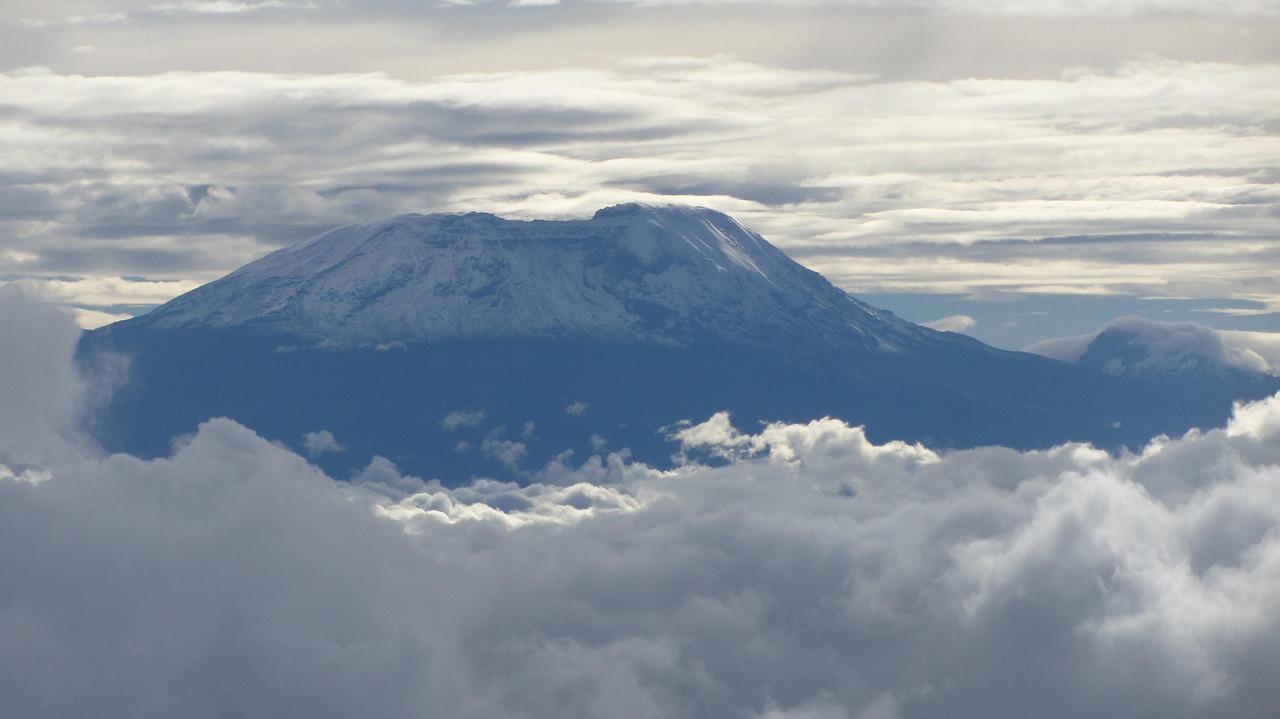
July 2026–2027: Peak Climbing Season Begins
July is the beginning of the high season on Kilimanjaro, attracting climbers from around the globe. Temperatures at the base are 10°C to 20°C (50°F to 68°F), while the summit remains bitterly cold at -5°C to -15°C (23°F to 5°F). The dry season ensures excellent trekking conditions, with clear skies during the day and star-filled nights at higher camps. July is ideal for adventurers who want the best chance of reaching the summit with good weather. However, as it is a peak season, routes tend to be busier compared to earlier months like June.
August 2026–2027: Clear Skies, Cold Nights
August offers some of the clearest skies of the year, making it perfect for photography and panoramic views of Kilimanjaro. The base temperatures are cooler, averaging 5°C to 15°C (41°F to 59°F), and the summit remains very cold with -5°C to -15°C (23°F to 5°F). While conditions are stable, climbers should prepare for freezing nights at higher elevations. August is another peak season month, so expect busier trails, especially on popular routes like Machame and Marangu. For many, August provides the perfect mix of clear skies, dry trails, and the best chance for summit success.
September 2026–2027: Ideal Conditions for Summit Success
September is one of the best months to climb Kilimanjaro. The base enjoys mild conditions of 10°C to 20°C (50°F to 68°F), while the summit remains very cold at -5°C to -15°C (23°F to 5°F). September offers excellent visibility, dry weather, and stable conditions, making it a top choice for summit attempts. Climbers can enjoy breathtaking sunrise views from Uhuru Peak and spectacular starlit skies at night. While it is a busy month on the mountain, September remains one of the safest and most reliable months to achieve summit success.
October 2026–2027: Mild Base, Freezing Summit
October brings slightly warmer conditions at the base, averaging 10°C to 20°C (50°F to 68°F). However, the summit temperatures continue to range between -5°C and -15°C (23°F to 5°F). The weather remains relatively stable, though there is an increased risk of rain toward the end of the month. October is a shoulder season for climbing, making it a good choice for those who want fewer crowds while still enjoying relatively good conditions. With proper gear, October can be an excellent month to reach the Roof of Africa.
November 2026–2027: Start of the Short Rains
November marks the start of the short rainy season on Kilimanjaro. The base temperatures climb back to 15°C to 25°C (59°F to 77°F), but summit conditions remain extremely cold, averaging -10°C to -20°C (14°F to -4°F). Rainfall makes trails slippery at lower altitudes, while higher sections can experience snowfall and icy winds. November is not the easiest month to climb, but experienced trekkers often choose it to avoid heavy crowds. For those seeking solitude on the mountain, November can be an adventurous but challenging time to climb.
December 2026–2027: Popular Holiday Climbing Season
December is a festive month, attracting climbers from around the world who want to celebrate the holidays on Kilimanjaro. At the base, temperatures remain mild at 15°C to 25°C (59°F to 77°F), while summit conditions are harsh, ranging from -10°C to -20°C (14°F to -4°F). Although it is part of the short rainy season, December offers a magical experience with snow-capped peaks and clear skies on many days. It’s one of the busiest months due to holiday tourism, so early booking is essential. For those wanting a truly unforgettable holiday adventure, December is a fantastic time to climb.
How Cold Is It Really on Kilimanjaro?
At Uhuru Peak (5,895m / 19,341 ft), nighttime temperatures can plummet to -29°C (-20°F), making it one of the coldest environments most climbers will ever experience. Due to Kilimanjaro’s sheer height, the mountain generates its own weather, meaning climbers can experience scorching sun at the base, rain showers in the forest, and snowstorms near the summit – all in the same trek. This unpredictability is what makes Kilimanjaro so unique and challenging. Proper clothing layers, high-quality sleeping bags, and insulated gear are essential for surviving the freezing summit push. The reward? Watching the sunrise above Africa’s vast plains from the Roof of Africa.
Best Kilimanjaro Climbing Tours & Prices
Choosing the right tour is just as important as choosing the right season. Kilimanjaro tours vary in length, route, and price, giving climbers flexibility based on time, budget, and fitness level. Shorter routes like Marangu (5 days) are cheaper but offer less acclimatization, while longer treks like Lemosho (8–9 days) increase summit success rates. Prices typically range from $1,200 to $5,000, depending on duration, route, and inclusions. Most packages cover accommodation, meals, permits, guides, and porters. Whether you’re seeking affordability or the highest summit success rate, there’s a tour for every adventurer.
Affordable Kilimanjaro Climbing Tours & Prices
Climbing Kilimanjaro is a life-changing adventure, and the cost depends on the route, number of days, and services included. Longer climbs offer better acclimatization and higher summit success rates, while shorter climbs are ideal for travelers with limited time. Below, we break down the most popular Kilimanjaro tour packages with detailed prices, features, and advantages to help you choose the perfect adventure.
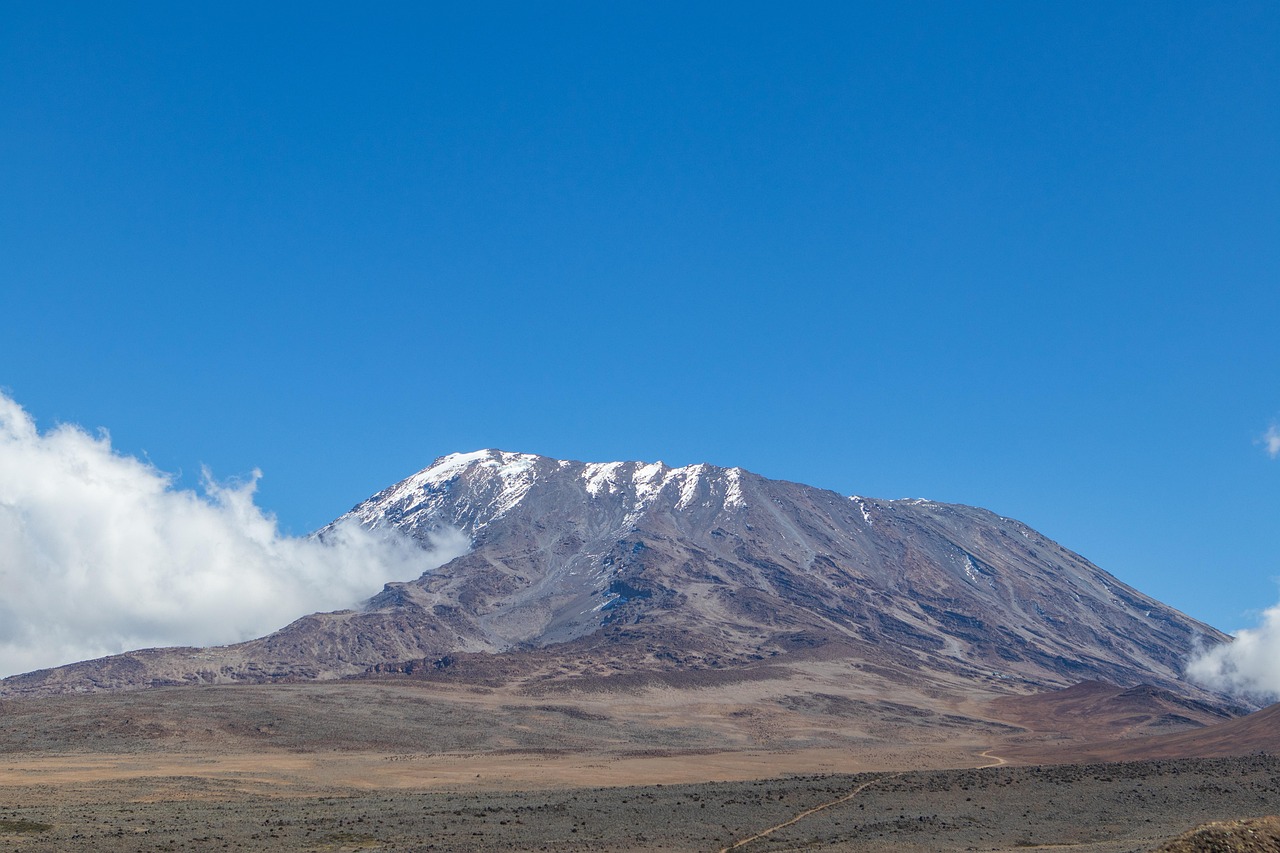
5-Day Kilimanjaro Climb – Marangu Route
💲 Price Range: $1,200 – $3,000
The 5-day Marangu route is the fastest and most budget-friendly way to climb Kilimanjaro. Known as the “Coca-Cola Route,” it offers hut accommodations instead of camping, making it a favorite among climbers who prefer extra comfort. This route is ideal for adventurers with limited time, but it has a lower summit success rate due to less acclimatization time. Despite this, the Marangu route provides a unique cultural experience and is the only path where climbers sleep in mountain huts. Perfect for those who want a quick yet thrilling climb.
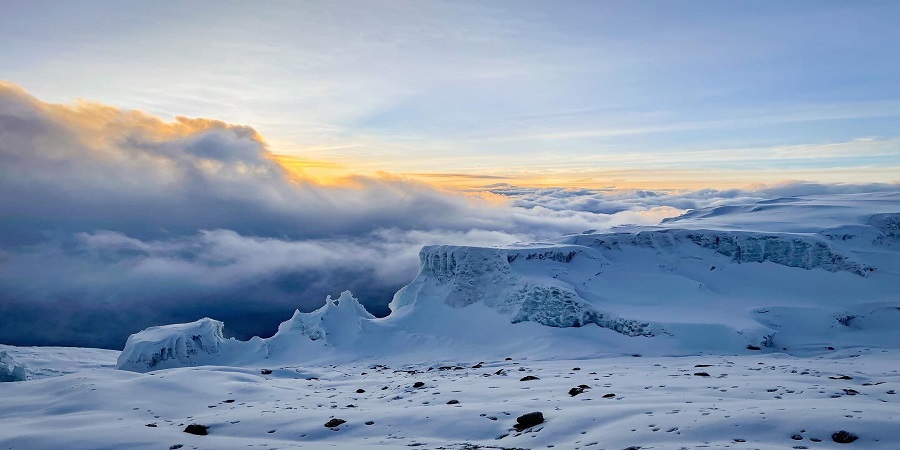
6-Day Kilimanjaro Climb – Machame, Marangu, Umbwe, or Rongai Routes
💲 Price Range: $1,400 – $5,000
The 6-day option is one of the most popular choices for climbers who want a balanced adventure. Routes like Machame and Rongai provide stunning landscapes, from lush rainforests to alpine deserts. Compared to the 5-day climb, this option offers more acclimatization, increasing the chance of summit success. Prices vary depending on the route and inclusions, but most packages cover park fees, porters, meals, and camping equipment. The 6-day climb is perfect for trekkers who want a good mix of affordability, comfort, and success potential.
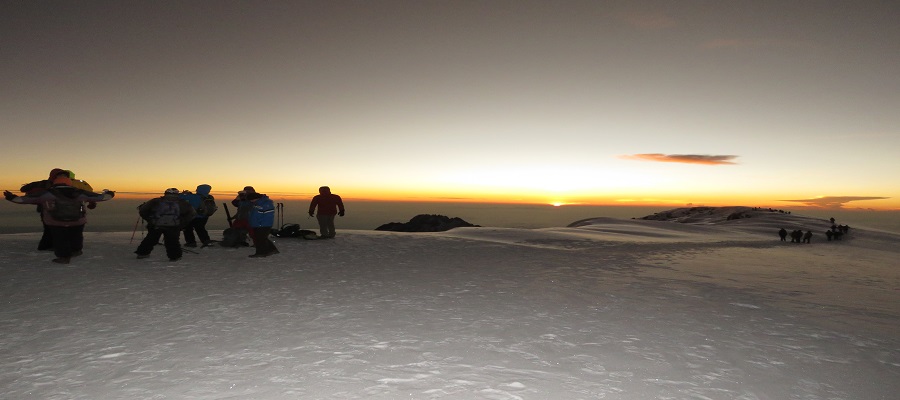
7-Day Kilimanjaro Climb – Machame, Lemosho, Rongai, Umbwe Routes
💲 Price Range: $1,500 – $5,500
The 7-day Machame route is one of the most scenic and rewarding routes on Kilimanjaro. Nicknamed the “Whiskey Route,” it is more challenging than Marangu but offers excellent acclimatization thanks to its “climb high, sleep low” strategy. This package usually includes camping gear, professional guides, government fees, and food throughout the trek. The extra day significantly boosts summit success rates while allowing trekkers to enjoy breathtaking views of glaciers and the Great Rift Valley. If you want a good balance of cost, adventure, and summit success, the 7-day Machame climb is an excellent choice.
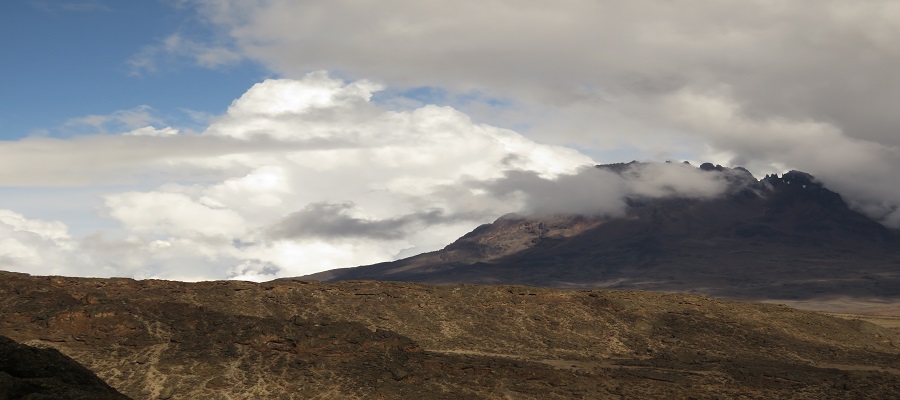
8-Day Kilimanjaro Climb – Lemosho Route
💲 Price Range: $1,800 – $5,800
The 8-day Lemosho route is widely regarded as the best Kilimanjaro climbing experience. Known for its stunning scenery and lower crowd levels, Lemosho takes you through untouched rainforests, moorlands, and dramatic ridgelines. With an acclimatization rate of 92%+, it offers one of the highest summit success rates on the mountain. The longer itinerary allows climbers to adjust to high altitudes more gradually, making the trek safer and more enjoyable. The Lemosho route is perfect for those seeking adventure, breathtaking views, and the best chance of standing on Uhuru Peak.
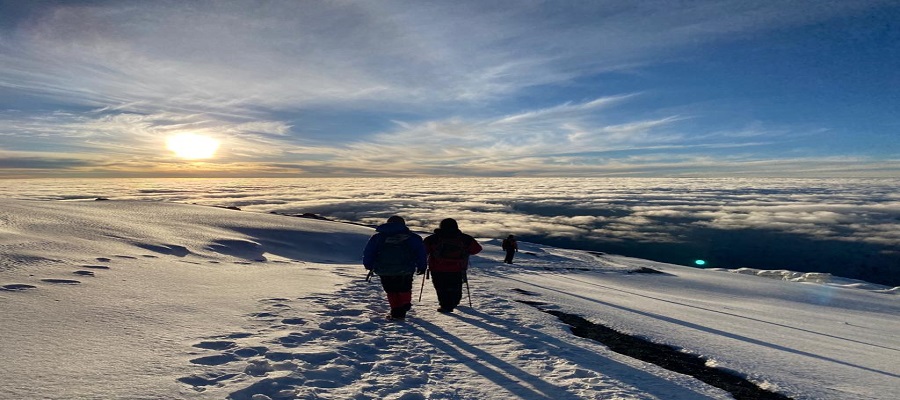
9-Day Kilimanjaro Climb – Lemosho Route
💲 Price Range: $1,200 – $6,000
The 9-day Lemosho route is the ultimate Kilimanjaro adventure. It offers exceptional acclimatization with plenty of time to adapt to the altitude, dramatically improving summit success rates. Trekkers enjoy panoramic views of Mount Meru, Shira Plateau, and Kilimanjaro’s glaciers, making this route a dream for photographers. The extra days mean slower hiking, less physical strain, and more time to enjoy the stunning landscapes. While it is the longest and often the most expensive option, it provides the safest and most rewarding Kilimanjaro experience available.
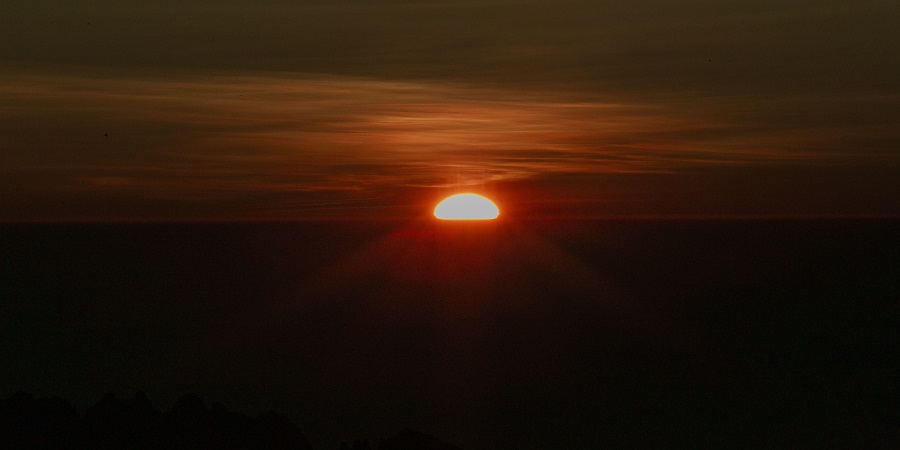
9-Day Kilimanjaro Climb – Northern Circuit Route
💲 Price Range: $2,100 – $6,000
The 9-day Northern Circuit route is the longest and most scenic trek on Kilimanjaro. It circles nearly the entire mountain, offering panoramic views and fewer crowds compared to other routes. With gradual altitude gain and plenty of acclimatization time, it has one of the highest summit success rates. Trekkers pass through diverse landscapes including lush rainforest, alpine desert, and glacial zones before reaching Uhuru Peak. This route is perfect for those who want a less-traveled path, incredible scenery, and the best chance to safely reach the summit.
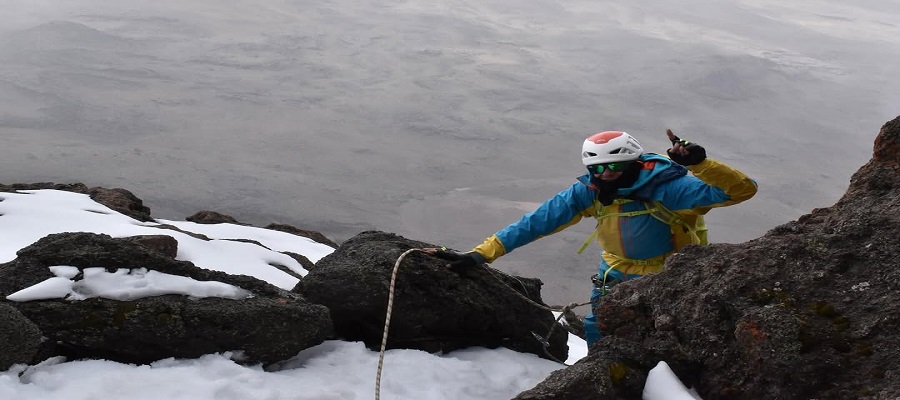
10-Day Kilimanjaro Climb – Northern Circuit Route
💲 Price Range: $2,300 – $6,200
The 10-day Northern Circuit route provides an extended experience on Africa’s tallest mountain. Adding an extra acclimatization day, this itinerary maximizes summit success and makes the climb more comfortable. Trekkers enjoy spectacular views of Kenya and Tanzania as they follow a scenic, low-traffic trail around Kilimanjaro. The extra time allows climbers to rest and adjust to altitude more effectively while still enjoying diverse habitats from rainforest to arctic summit zones. This option is ideal for those who want to increase their success chances while enjoying a longer, more immersive journey.
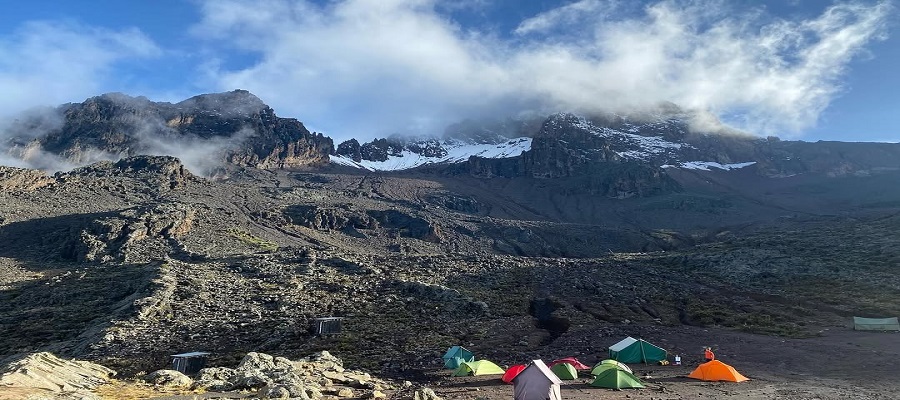
11-Day Kilimanjaro Climb – Northern Circuit Route
💲 Price Range: $2,500 – $6,500
The 11-day Northern Circuit route is the ultimate Kilimanjaro trekking adventure. With the longest itinerary available, it offers unmatched acclimatization, giving climbers the best chance of safely summiting Uhuru Peak. The route circles the mountain completely, providing incredible 360° views and a unique perspective of Kilimanjaro’s different ecosystems. This extended trek is designed for trekkers who prefer a slower pace, more rest days, and the opportunity to fully immerse themselves in the beauty of Kilimanjaro. It’s the most rewarding option for those seeking both adventure and safety.
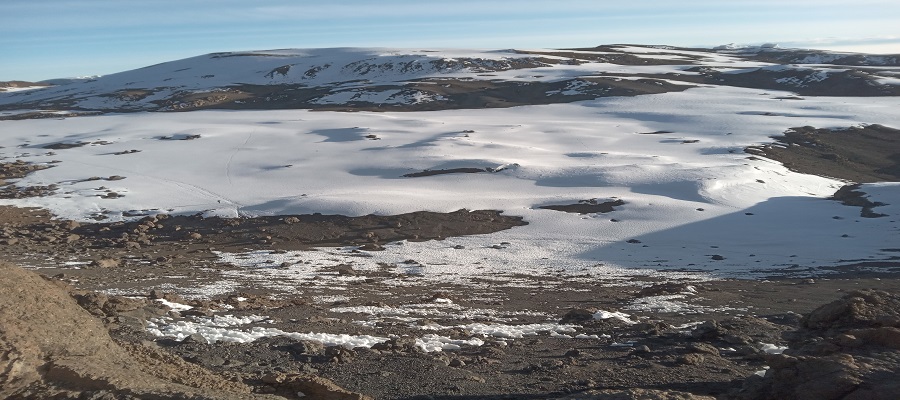
Book Your Kilimanjaro Climb Today
Climbing Mount Kilimanjaro is more than just a trek – it’s a life-changing journey through multiple climates to stand on Africa’s highest point. Choosing the right time and the right route can make your adventure unforgettable. If you’re ready to challenge yourself on the world’s tallest free-standing mountain, don’t wait.
